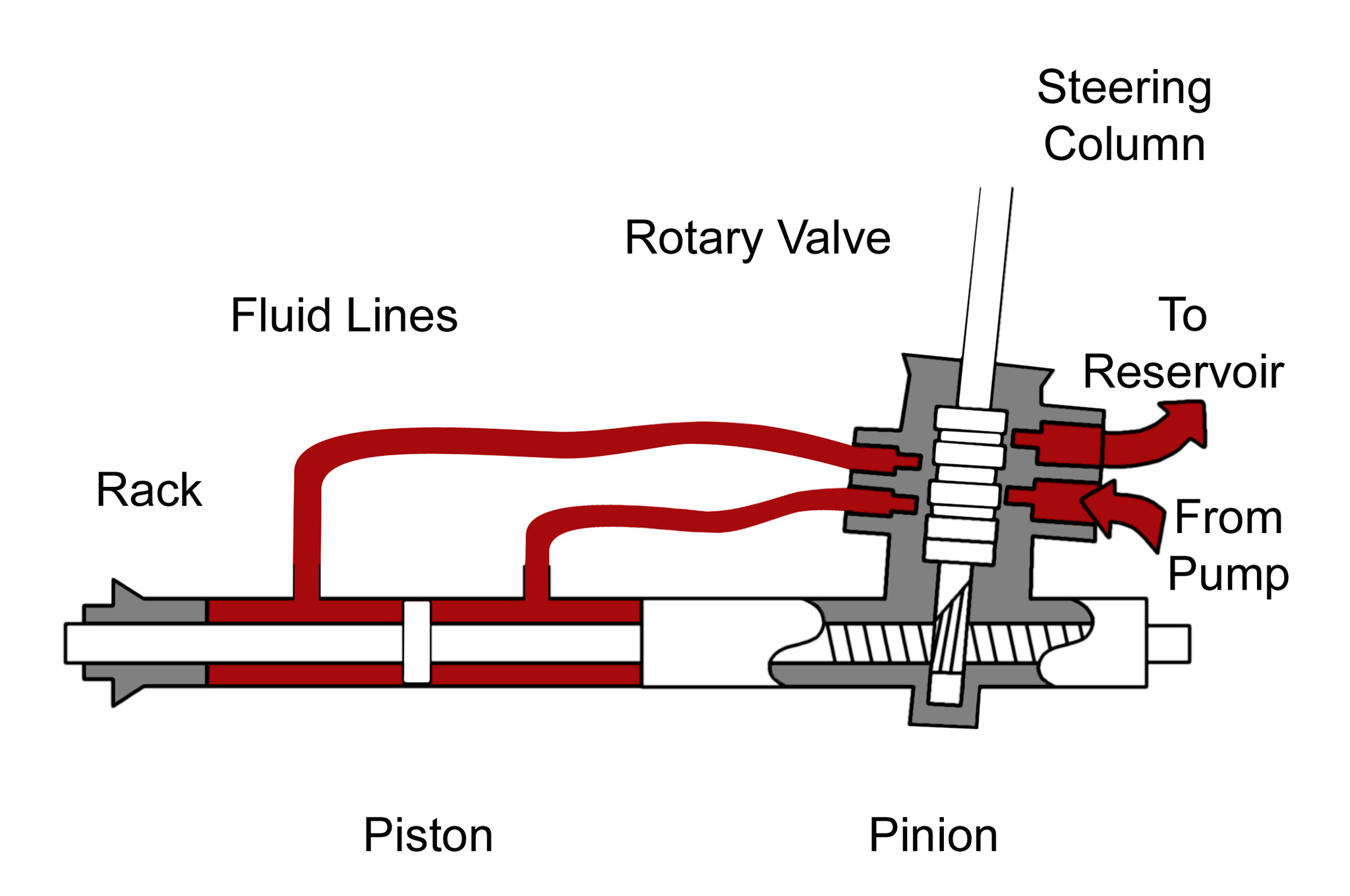Steering systems play an indispensable role in the functionality of modern vehicles, intricately connecting driver inputs with wheel movements. Among these systems, the rack and pinion mechanism stands out for its simplicity and efficiency. Understanding rack and pinion power-assisted steering can shift your perspective on vehicle handling and performance, inviting you to dive deeper into the nuances of automotive engineering. Buckle up, as we explore the intricacies of this steering wonder.
To begin with, let’s dissect the core components of a rack and pinion system. At the heart of this mechanism lies the pinion gear, a cylindrical gear that engages with the rack—an elongated metal bar with teeth that correspond to those of the pinion. When the driver turns the steering wheel, this rotational movement transforms into linear motion through the pinion’s engagement with the rack, allowing the wheels to pivot left or right. The straightforward design is both effective and compact, making it a preferred choice for both consumer and high-performance vehicles.
In a typical setup, rack and pinion systems come in two forms: manual and power-assisted. The former relies solely on human strength, which might pose challenges in larger vehicles, especially during low-speed maneuvers. It’s within power-assisted steering that the true ingenuity of rack and pinion systems shines. Utilizing hydraulic or electric actuators, this power assist significantly reduces the effort required to steer, enhancing the driving experience.
Power-assisted steering not only alleviates the physical strain on the driver but also improves vehicle responsiveness. Imagine navigating a tight parking lot or executing a sudden lane change on the freeway; the enhanced feedback from a power-assisted rack and pinion system allows drivers to maintain precise control over their vehicle. The inherent efficiency of this system results in a smoother, more enjoyable ride.
One might wonder about the mechanics behind power assistance. In a hydraulic setup, a pump generates pressure in the steering fluid, which then assists the driver’s input. Conversely, electric power steering employs a motor to provide the necessary force, often adapting in real-time to driving conditions. This adaptability enhances safety by providing tactile feedback on road conditions, enabling the driver to maintain optimal control, even in adverse situations.
While both hydraulic and electric systems offer their unique advantages, the trend is leaning towards electric power steering (EPS) due to its collaborative integration with contemporary vehicle technologies. EPS allows for advanced features, such as lane-keeping assist and automated parking, which seem straight out of a science fiction novel. The ability to precisely control steering efforts digitally opens new avenues for enhancing driver comfort and safety.
However, like any technology, rack and pinion systems are not infallible. Over time, wear and tear can compromise the unit’s performance, leading to issues such as increased play in the steering wheel or difficulty in turning. Should you experience a lack of responsiveness or hear unusual noises while steering, it may be time to inspect your steering system. Regular maintenance ensures longevity and reliability, keeping your ride as enjoyable as it was on day one.
Let’s not overlook the importance of alignment and suspension in the broader context of steering performance. An improperly aligned vehicle can lead to uneven tire wear, negatively impacting handling and overall safety. The zenith of vehicle performance occurs when all components work in harmonious synergy—this includes not just the steering system but the engine, suspension, and braking systems as well.
On the horizon, advancements in technology continue to shape the future of steering systems. Variable ratio steering, for instance, allows for different gear ratios during various driving conditions, providing sharper responses during fast maneuvers while ensuring stability at higher speeds. Moreover, innovations in autonomous driving raise fascinating questions regarding steering systems. Will traditional mechanisms remain, or will we see a transcendence into systems that require no human input at all?
In conclusion, the mechanisms of rack and pinion power-assisted steering encapsulate a remarkable blend of simplicity and sophistication. By understanding these systems, we not only appreciate the engineering prowess behind our modern vehicles but also enhance our driving experiences. This knowledge invites curiosity, urging us to question and explore every aspect of our vehicles. The next time you take the wheel, contemplate the incredible engineering feat that is your steering system, and consider how it elevates your driving experience, allowing for a dance of precision and control on the open road.
